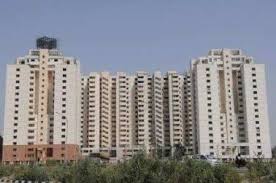The Gujarat government had earlier said the new jantri rates would come into effect from February 5, but agreed to defer the implementation after real estate developers protested.
Also Read– Maharashtra: MHADA announces sale of over 900 homes and plots in multiple cities
On February 4, the Gujarat government announced a 100 percent hike in jantri rates – ready reckoner rates applicable to any property bought or sold across the state – with immediate effect. A week later on Saturday, buckling under pressure from the powerful developer lobby, the Bhupendra Patel government put off the new rates till April 15.
How does the jantri work?
Jantri or Annual Statement of Rates (ASR) is a minimum rate fixed by state governments for registration of any real estate property that undergoes a change in ownership. These rates differ between cities. Even within localities, jantri rates may differ based on property type (residential, commercial, institutional), location, size of property, and various other factors. When an old or existing property is bought by a new owner, it has to be registered as per the jantri or the market (selling) price, whichever is higher.
Read More: Greater Noida plot scheme deadline extended: Buy house at nearly half price through SBI e-auction
As the name, ASR, suggests, jantri rates can change annually, but were last hiked in April 2011. Then on February 4, the revenue department under Chief Minister Bhupendra Patel – who was earlier associated with the construction business himself – issued a resolution to hike the jantri rates by 100 per cent, to come into effect from the next day.
The Inspector General of Registration and Superintendent of Stamps issued a release saying the decision was taken to “keep up with the rapid pace of industrial, urban and rural development” and to “assure reasonable market rates for citizen’s immovable properties.”
By hiking the jantri, or, as other states call it, the circle of rates, the state government will collect more revenue through stamp duty and registration charges. Also, the move is expected to curb black money in the real estate sector, by bridging the gap between jantri rates and the actual market price of a property. Land and property owners usually quote prices higher than the jantri rates, thus earning more.
Read More: Average Housing Prices Rise 7% in 2022 Across Top-8 Cities: PropTiger Report
Why did estate developers protest the hike?
The primary argument by the developers is that the hike has been announced without “consultation” and “suddenly”.
When the last revision was announced on March 31, 2011, it was to come into effect from April 1, 2011, but was actually implemented from April 18 that year, scaling down the 100 per cent hike to 50 per cent. This was done after a committee headed by the then revenue minister, with ministers of urban development and finance as members, heard “representations based on which recommendations were made.” Also, the last hike was based on a land price survey carried out between January and July 2009.
This time, the sudden announcement has jeopardised ongoing high-value land deals with farmers, developers claim. Secondly, builders argue that the hike is “unscientific” as at many locations even within major cities, the new jantri prices now stand higher than the existing market prices.
Also Read– LIC Jeevan Azad policy sells 50,000 in 10-15 days, all you need to know about the plan
What were the primary demands of developers?
Ajay Patel, Chairman of CREDAI – Gujarat, an umbrella body of real estate developers, said, “We are not opposing the Jantri hike. But the sudden announcement is creating problems. Land deals with farmers are getting cancelled. Everyone knew that the government would hike the rates around April, and so the deals were being done accordingly. Now, with the unexpected announcement, everything has changed. So we are seeking a 50 per cent roll back in the hike and pushing back the implementation to May 1, which is the foundation day of the state”.
The government has agreed to defer the implementation to April 15, 2023.
The developers also said they were not consulted before the jantri was finalised. On February 5, the developers met the CM and on Friday (February 10), gave a memorandum to the Ahmedabad collector, which led to the government deferring the date.
What is the government’s defence?
The government in a resolution stated that the jantri was last hiked 12 years ago and the rates need to be in tune with the industrial, urban and rural development that has taken place in the state since.
There is also the black money factor. “In order to counter generation of black money, jantri rates need to be close to existing market or selling prices. The current hike brings the jantri closer to the existing market rates,” said a real estate expert.
Read More: Budget 2023: More could have been done for the real estate sector
Why did developers call the hike unscientific?
Patel said there are many examples where jantri is more than the selling or market price of a property.
“For instance, in Sarkhej (a locality in Ahmedabad), Rs 2,800 is the selling cost per square feet and jantri is Rs 3,000. Similarly, there are places where jantri needs to be increased by 400 per cent. We are not against that. We are against the discrepancies. For example, while the selling price of both Thaltej and Ambli (located on western periphery of Ahmedabad city) are the same, the jantri price of Ambli has been increased to Rs 240,00 square metre while that of Thaltej has risen to Rs 1.02 lakh per square metre. The jantri rates should have been equal,” said Patel.
What was the immediate fallout of the decision?
According to the CREDAI chief, over 50,000 real-estate deals are currently stalled due the sudden revision in jantri rates. “The customers will ultimately bear the brunt of the decision, as we will pass on the extra cost,” Patel said.
However, after a few rounds of meetings with state government officials, the government on February 11 decided to postpone the hike to April 15. The “stop-gap arrangement” will help developers and builders push stalled deals at old jantri rates, and also buy paid Floor Space Index (FSI) at old rates.



































